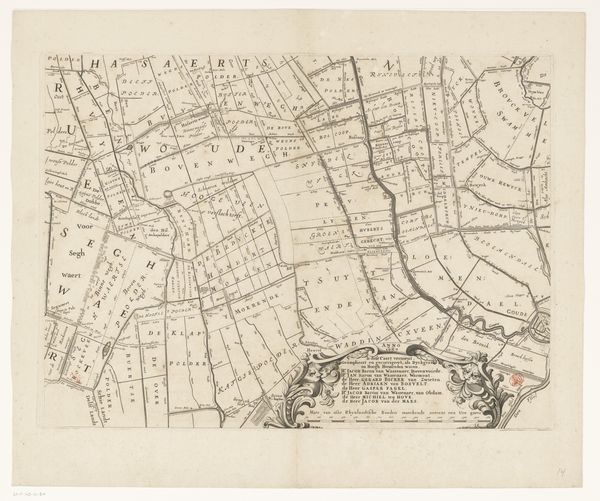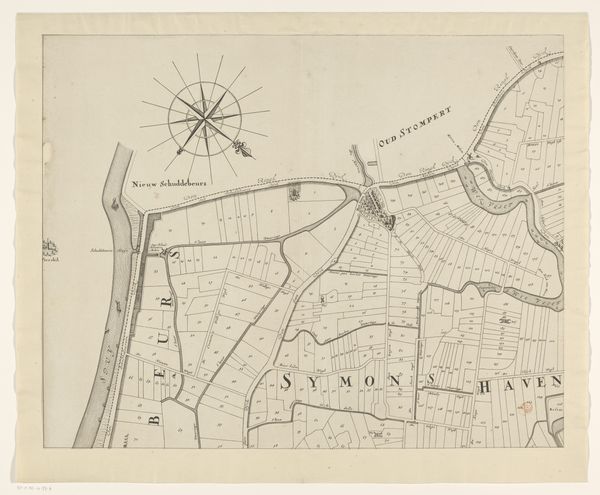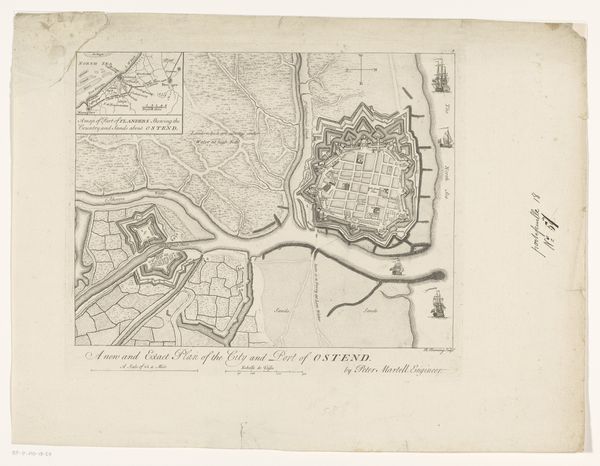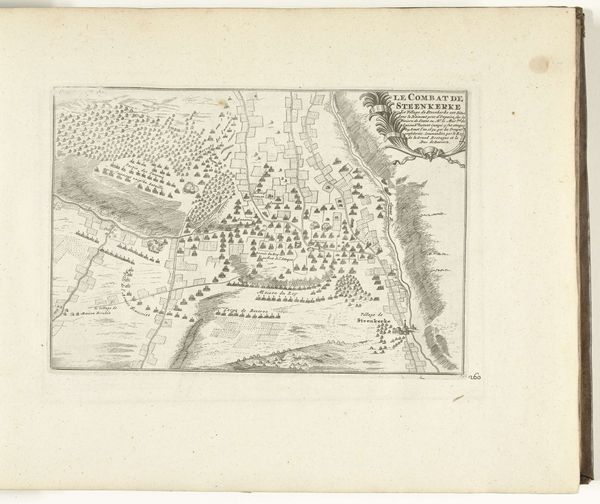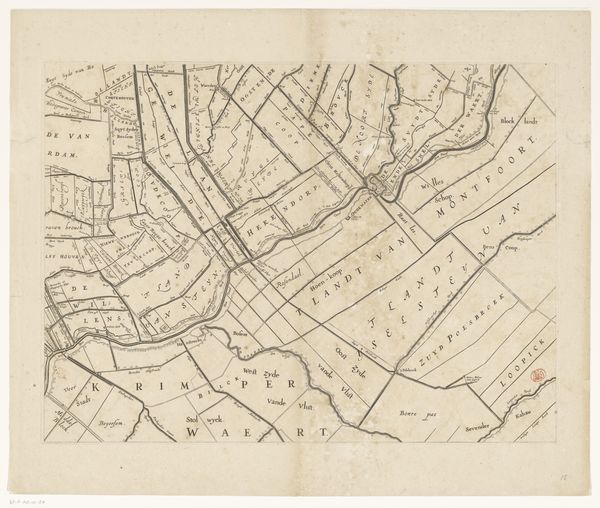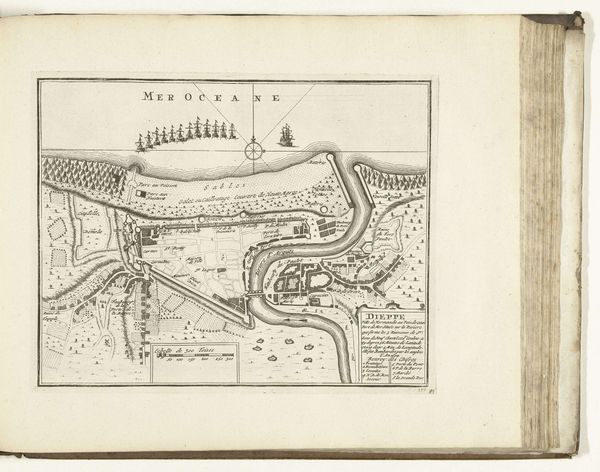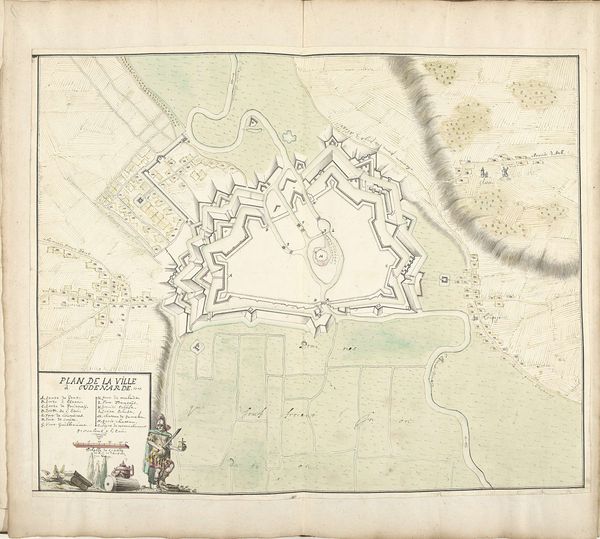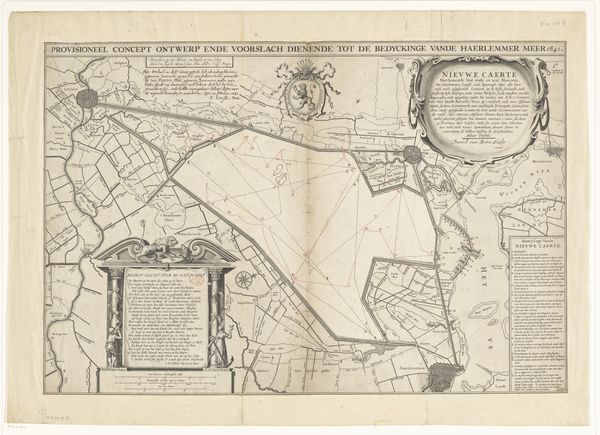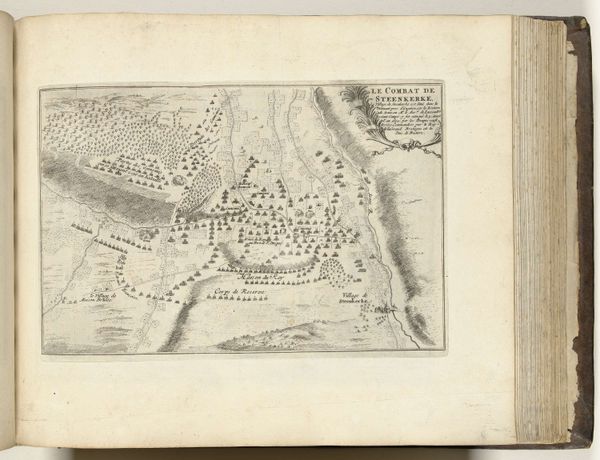
Plattegrond van het bombardement van Brussel door de Fransen (bovenste helft), 1695 1695
0:00
0:00
print, engraving
#
baroque
# print
#
history-painting
#
engraving
Dimensions: height 211 mm, width 306 mm
Copyright: Rijks Museum: Open Domain
Harmanus van Loon created this etching in 1695, a schematic representation of the French bombardment of Brussels. It's impossible to look at this map without considering the human cost of war, the planned destruction of a city and the displacement of its people. What does it mean to map trauma? How does one represent the chaos of war, the smell of smoke, the screams of the injured? Van Loon has left us with a bird's eye view, a supposed objective rendering, yet it is full of subjective implications. Maps are never neutral; they are imbued with the power dynamics of their time. While van Loon meticulously charts the positions of French artillery, the map lacks any real sense of the lives disrupted, the cultural heritage upended. How can we visualize not just the geography of conflict, but also the emotional and psychological landscapes it leaves behind? This print serves as a stark reminder of the selective nature of historical records and the importance of seeking out alternative narratives.
Comments
No comments
Be the first to comment and join the conversation on the ultimate creative platform.
